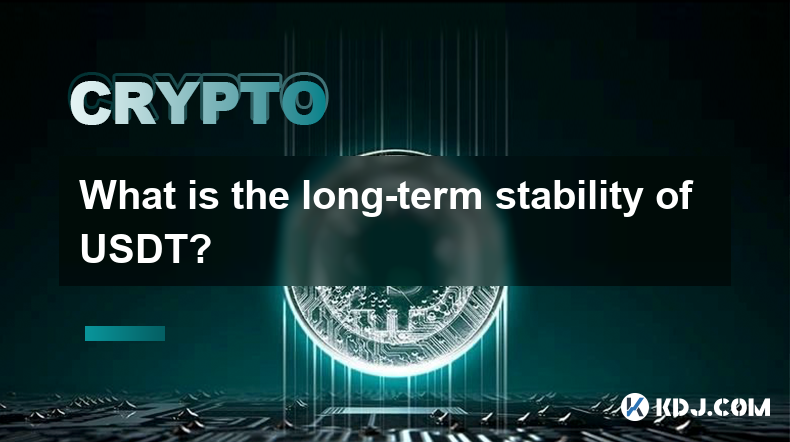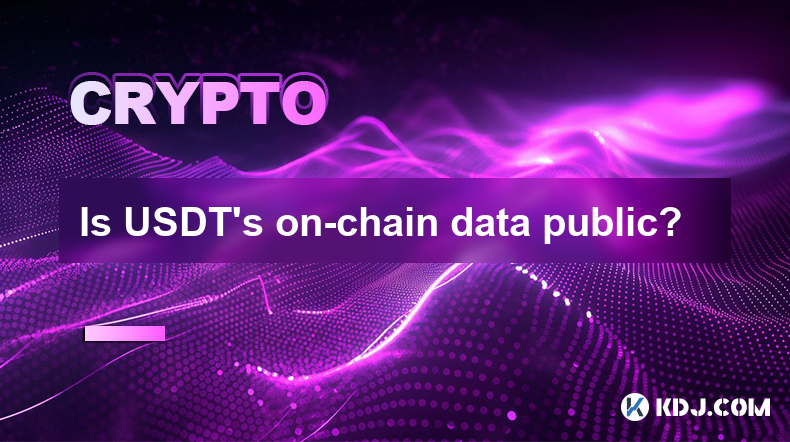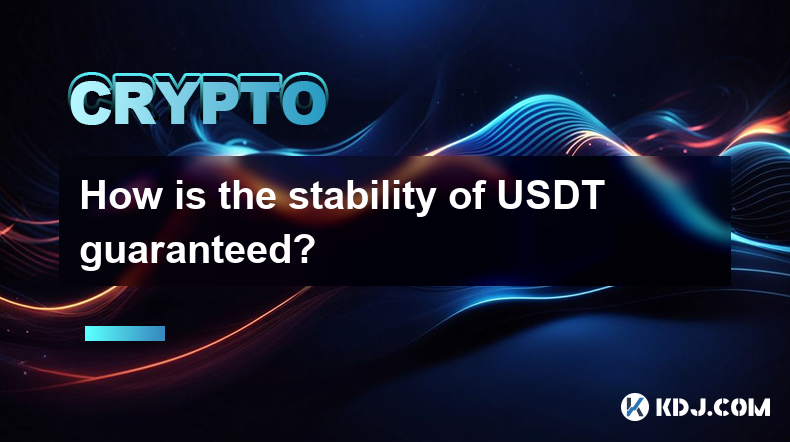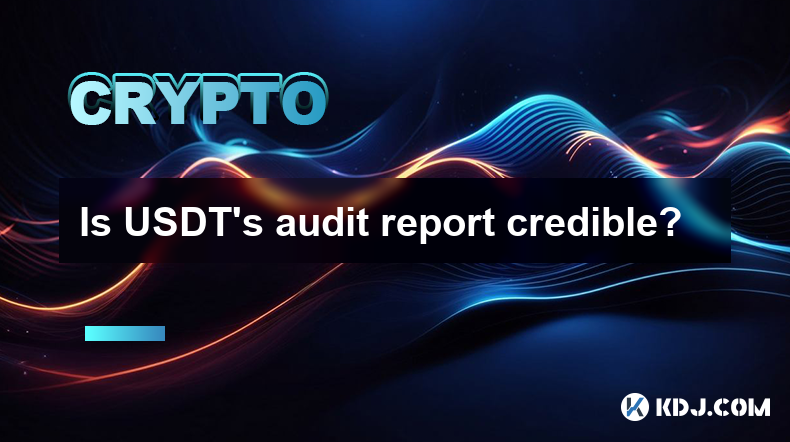-
 Bitcoin
Bitcoin $83,645.2925
2.13% -
 Ethereum
Ethereum $1,810.3926
2.44% -
 Tether USDt
Tether USDt $0.9997
-0.01% -
 XRP
XRP $2.1625
6.88% -
 BNB
BNB $597.0728
1.93% -
 Solana
Solana $120.3405
5.84% -
 USDC
USDC $1.0000
-0.01% -
 Dogecoin
Dogecoin $0.1697
5.76% -
 Cardano
Cardano $0.6612
4.89% -
 TRON
TRON $0.2366
-0.18% -
 Chainlink
Chainlink $12.9367
4.36% -
 UNUS SED LEO
UNUS SED LEO $8.9186
-4.81% -
 Toncoin
Toncoin $3.2881
-3.62% -
 Stellar
Stellar $0.2568
1.07% -
 Avalanche
Avalanche $18.2513
3.22% -
 Sui
Sui $2.2464
5.05% -
 Shiba Inu
Shiba Inu $0.0...01235
3.20% -
 Hedera
Hedera $0.1624
3.07% -
 Litecoin
Litecoin $83.6396
2.15% -
 Polkadot
Polkadot $3.9903
0.78% -
 Bitcoin Cash
Bitcoin Cash $303.0186
2.29% -
 MANTRA
MANTRA $6.2191
-0.79% -
 Bitget Token
Bitget Token $4.5070
0.81% -
 Dai
Dai $1.0001
0.01% -
 Ethena USDe
Ethena USDe $0.9991
-0.05% -
 Pi
Pi $0.7573
46.01% -
 Monero
Monero $217.7441
1.11% -
 Hyperliquid
Hyperliquid $11.9838
7.25% -
 Uniswap
Uniswap $5.9118
4.14% -
 OKB
OKB $51.3601
9.71%
How is USDT compliant?
Tether ensures USDT compliance through AML programs, KYC policies, transparency via audits, and collaboration with regulators, despite facing evolving regulatory challenges.
Apr 05, 2025 at 11:28 am

USDT, also known as Tether, is a stablecoin that aims to maintain a stable value by being pegged to the US dollar. Ensuring compliance is crucial for Tether to maintain its reputation and operational integrity within the cryptocurrency ecosystem. Compliance in the context of USDT involves adhering to various regulatory standards, including anti-money laundering (AML) and know-your-customer (KYC) policies. Tether Limited, the company behind USDT, works to ensure that its operations align with these standards, which are essential for fostering trust and stability within the crypto market.
Tether's compliance efforts are multifaceted, involving cooperation with regulatory bodies, implementing robust internal policies, and maintaining transparency with its user base. This article will delve into how USDT achieves compliance, the specific measures taken, and the challenges faced in this ongoing process. Understanding these aspects provides insight into the operational framework that supports USDT's stability and credibility.
Regulatory Framework and Compliance
USDT operates within a complex regulatory environment that varies by jurisdiction. To ensure compliance, Tether Limited must navigate these varying regulations while maintaining its global operations. One of the key aspects of compliance is adherence to AML regulations, which are designed to prevent the use of cryptocurrencies for illicit activities such as money laundering and terrorist financing.
Tether Limited has implemented a comprehensive AML program that includes monitoring transactions for suspicious activities and reporting them to the relevant authorities. This program is crucial for maintaining the integrity of the USDT ecosystem and ensuring that it is not used as a tool for illegal activities. Additionally, Tether Limited collaborates with regulatory bodies in different jurisdictions to ensure that its operations meet local standards.
KYC Policies and User Verification
Know-your-customer (KYC) policies are another critical component of USDT's compliance strategy. KYC procedures help Tether Limited verify the identity of its users, which is essential for preventing fraud and ensuring that the platform is not used for illegal activities. Tether Limited requires users to provide identification documents and other personal information to complete the KYC process.
The KYC process involves several steps, including:
- Collecting personal information such as names, addresses, and dates of birth.
- Verifying identity through government-issued identification documents.
- Conducting background checks to ensure that users are not on any watchlists or involved in illegal activities.
By implementing these KYC policies, Tether Limited can ensure that its platform is used by legitimate users, which is crucial for maintaining compliance and trust within the cryptocurrency community.
Transparency and Audits
Transparency is a key element of USDT's compliance strategy. Tether Limited regularly publishes reports on its reserves, which are intended to provide users with assurance that USDT is fully backed by US dollars. These reports are crucial for maintaining trust and ensuring that users understand the financial health of the platform.
In addition to publishing reserve reports, Tether Limited undergoes regular audits by independent third parties. These audits are designed to verify that Tether Limited's operations are compliant with relevant regulations and that its reserves are accurately represented. The results of these audits are made public, providing an additional layer of transparency and accountability.
However, the process of ensuring transparency and conducting audits is not without challenges. Tether Limited has faced criticism in the past for the perceived lack of transparency in its operations. To address these concerns, the company has taken steps to improve its reporting and auditing processes, including working with reputable auditing firms and providing more detailed information about its reserves.
Collaboration with Regulatory Bodies
Tether Limited actively collaborates with regulatory bodies to ensure that its operations are compliant with local and international standards. This collaboration involves regular communication with regulators, participation in regulatory consultations, and adherence to regulatory guidelines. By working closely with regulatory bodies, Tether Limited can stay ahead of regulatory changes and ensure that its operations remain compliant.
One example of this collaboration is Tether Limited's engagement with the Financial Crimes Enforcement Network (FinCEN) in the United States. Tether Limited has registered with FinCEN as a money services business, which requires it to comply with AML and KYC regulations. This registration is a crucial step in ensuring that Tether Limited's operations meet the high standards set by US regulators.
In addition to working with US regulators, Tether Limited also collaborates with regulatory bodies in other jurisdictions. This global approach to compliance is essential for a cryptocurrency like USDT, which is used by users around the world. By maintaining strong relationships with regulators, Tether Limited can ensure that its operations are compliant with the diverse regulatory environments in which it operates.
Challenges and Ongoing Efforts
Ensuring compliance is an ongoing process that presents several challenges for Tether Limited. One of the main challenges is the rapidly evolving nature of cryptocurrency regulations. As governments around the world develop new regulations to address the unique challenges posed by cryptocurrencies, Tether Limited must continuously adapt its compliance strategies to meet these new standards.
Another challenge is the need to balance compliance with user privacy. While KYC and AML policies are essential for preventing illegal activities, they can also raise concerns about user privacy. Tether Limited must find a balance between implementing robust compliance measures and protecting the privacy of its users.
To address these challenges, Tether Limited is continuously improving its compliance processes. This includes investing in advanced technology to enhance its AML and KYC systems, hiring compliance experts to ensure that its operations meet the highest standards, and engaging with the cryptocurrency community to gather feedback and improve its practices.
Technological Solutions for Compliance
Technology plays a crucial role in Tether Limited's compliance efforts. The company uses advanced software to monitor transactions and detect suspicious activities, which is essential for maintaining compliance with AML regulations. This software can analyze large volumes of data in real-time, allowing Tether Limited to quickly identify and report any suspicious transactions.
In addition to transaction monitoring, Tether Limited uses technology to streamline its KYC processes. This includes using automated systems to verify user identities and conduct background checks, which can significantly reduce the time and resources required to complete the KYC process. By leveraging technology, Tether Limited can enhance its compliance efforts while also improving the user experience.
Another technological solution that Tether Limited is exploring is the use of blockchain analytics. Blockchain analytics can provide valuable insights into the flow of funds within the USDT ecosystem, which can help Tether Limited identify and prevent illegal activities. By integrating blockchain analytics into its compliance strategy, Tether Limited can further enhance its ability to maintain compliance and protect its users.
User Education and Community Engagement
Educating users about compliance is another important aspect of Tether Limited's strategy. By providing users with information about AML and KYC policies, Tether Limited can help them understand the importance of compliance and how it contributes to the stability and security of the USDT ecosystem. This education can take the form of blog posts, webinars, and other educational resources.
In addition to educating users, Tether Limited engages with the cryptocurrency community to gather feedback and improve its compliance practices. This engagement can include participating in industry conferences, collaborating with other cryptocurrency companies, and soliciting feedback from users. By actively engaging with the community, Tether Limited can ensure that its compliance efforts are aligned with the needs and expectations of its users.
Future Outlook and Continuous Improvement
The future of USDT's compliance efforts will be shaped by ongoing regulatory developments and technological advancements. As regulations continue to evolve, Tether Limited will need to adapt its compliance strategies to meet these new standards. This may involve implementing new AML and KYC policies, enhancing its transparency and auditing processes, and further leveraging technology to improve its compliance efforts.
Continuous improvement is a key focus for Tether Limited. The company is committed to regularly reviewing and updating its compliance practices to ensure that they remain effective and aligned with the latest regulatory standards. This includes conducting regular internal audits, seeking feedback from users and regulators, and investing in new technologies to enhance its compliance capabilities.
By maintaining a proactive approach to compliance, Tether Limited can ensure that USDT remains a trusted and stable cryptocurrency. This ongoing commitment to compliance is essential for fostering trust and stability within the cryptocurrency ecosystem, and it will continue to be a key focus for Tether Limited in the years to come.
Common Questions Related to USDT Compliance
Q: What is the role of AML policies in USDT's compliance strategy?
A: Anti-money laundering (AML) policies play a crucial role in USDT's compliance strategy by helping to prevent the use of the cryptocurrency for illegal activities such as money laundering and terrorist financing. Tether Limited implements a comprehensive AML program that includes monitoring transactions for suspicious activities and reporting them to the relevant authorities. This program is essential for maintaining the integrity of the USDT ecosystem and ensuring compliance with regulatory standards.
Q: How does Tether Limited ensure KYC compliance?
A: Tether Limited ensures KYC compliance by requiring users to provide identification documents and other personal information to complete the KYC process. This process involves collecting personal information, verifying identity through government-issued documents, and conducting background checks to ensure that users are not involved in illegal activities. By implementing these KYC policies, Tether Limited can verify the identity of its users and prevent fraud, which is crucial for maintaining compliance and trust within the cryptocurrency community.
Q: What measures does Tether Limited take to ensure transparency?
A: Tether Limited ensures transparency by regularly publishing reports on its reserves and undergoing audits by independent third parties. These reports provide users with assurance that USDT is fully backed by US dollars, while the audits verify that Tether Limited's operations are compliant with relevant regulations. By making the results of these audits public, Tether Limited provides an additional layer of transparency and accountability, which is essential for maintaining trust within the cryptocurrency ecosystem.
Q: How does Tether Limited collaborate with regulatory bodies?
A: Tether Limited collaborates with regulatory bodies by maintaining regular communication, participating in regulatory consultations, and adhering to regulatory guidelines. This collaboration includes registering with regulatory bodies such as the Financial Crimes Enforcement Network (FinCEN) in the United States and working with regulators in other jurisdictions. By actively engaging with regulatory bodies, Tether Limited can ensure that its operations remain compliant with local and international standards, which is crucial for maintaining the stability and credibility of USDT.
Q: What challenges does Tether Limited face in ensuring compliance?
A: Tether Limited faces several challenges in ensuring compliance, including the rapidly evolving nature of cryptocurrency regulations and the need to balance compliance with user privacy. As governments develop new regulations to address the unique challenges posed by cryptocurrencies, Tether Limited must continuously adapt its compliance strategies to meet these new standards. Additionally, while KYC and AML policies are essential for preventing illegal activities, they can also raise concerns about user privacy. Tether Limited must find a balance between implementing robust compliance measures and protecting the privacy of its users.
Disclaimer:info@kdj.com
The information provided is not trading advice. kdj.com does not assume any responsibility for any investments made based on the information provided in this article. Cryptocurrencies are highly volatile and it is highly recommended that you invest with caution after thorough research!
If you believe that the content used on this website infringes your copyright, please contact us immediately (info@kdj.com) and we will delete it promptly.
- title: GameStop Completes $1.5B Fundraising Round to Invest in Bitcoin
- 2025-04-05 20:20:13
- South Korea's 7-Eleven stores will accept payments in the country's central bank digital currency (CBDC)
- 2025-04-05 20:20:13
- VanEck Proposes First BNB ETF in the U.S.
- 2025-04-05 20:15:12
- South Korean company launches 'political meme coins' to gauge public sentiment during impeachment trial
- 2025-04-05 20:15:12
- Despite Market Slowdown, DeFi Lending Continues to Be One of the Most Active App Types
- 2025-04-05 20:10:12
- The XRPTurbo presale has officially sold out, securing over 300000 XRP in under 30 days
- 2025-04-05 20:10:12
Related knowledge

What is the long-term stability of USDT?
Apr 04,2025 at 10:28pm
The long-term stability of USDT, also known as Tether, is a topic of significant interest within the cryptocurrency community. USDT is a type of stablecoin, designed to maintain a stable value by being pegged to a reserve asset, typically the US dollar. The stability of USDT is crucial for its widespread use in trading, as a hedge against volatility, an...

Is USDT's on-chain data public?
Apr 05,2025 at 08:49am
The transparency of USDT's on-chain data is a topic of significant interest within the cryptocurrency community. Tether, the company behind USDT, claims that its operations are transparent and that the on-chain data is publicly accessible. However, understanding the nuances of this data and how to access it can be challenging. This article will delve in...

How is the stability of USDT guaranteed?
Apr 03,2025 at 06:00am
The stability of USDT, also known as Tether, is a critical aspect that underpins its role as a stablecoin in the cryptocurrency market. USDT is designed to maintain a 1:1 peg with the US dollar, which is achieved through a combination of mechanisms and practices. Understanding these elements is essential for anyone interested in the stability and reliab...

How is USDT compliant?
Apr 05,2025 at 11:28am
USDT, also known as Tether, is a stablecoin that aims to maintain a stable value by being pegged to the US dollar. Ensuring compliance is crucial for Tether to maintain its reputation and operational integrity within the cryptocurrency ecosystem. Compliance in the context of USDT involves adhering to various regulatory standards, including anti-money la...

Is USDT's audit report credible?
Apr 02,2025 at 03:00pm
The credibility of USDT's audit report is a topic of significant interest and debate within the cryptocurrency community. USDT, or Tether, is a stablecoin that claims to be backed 1:1 by traditional fiat currencies, primarily the US dollar. The company behind USDT, Tether Limited, periodically releases audit reports to assure users of its solvency and t...

Is USDT's reserve transparent?
Apr 03,2025 at 01:50pm
USDT, also known as Tether, is a widely used stablecoin in the cryptocurrency market, designed to maintain a 1:1 peg with the US dollar. One of the most frequently asked questions about USDT is the transparency of its reserves. This article aims to delve into the details of USDT's reserve transparency, exploring the measures Tether Limited has taken to ...

What is the long-term stability of USDT?
Apr 04,2025 at 10:28pm
The long-term stability of USDT, also known as Tether, is a topic of significant interest within the cryptocurrency community. USDT is a type of stablecoin, designed to maintain a stable value by being pegged to a reserve asset, typically the US dollar. The stability of USDT is crucial for its widespread use in trading, as a hedge against volatility, an...

Is USDT's on-chain data public?
Apr 05,2025 at 08:49am
The transparency of USDT's on-chain data is a topic of significant interest within the cryptocurrency community. Tether, the company behind USDT, claims that its operations are transparent and that the on-chain data is publicly accessible. However, understanding the nuances of this data and how to access it can be challenging. This article will delve in...

How is the stability of USDT guaranteed?
Apr 03,2025 at 06:00am
The stability of USDT, also known as Tether, is a critical aspect that underpins its role as a stablecoin in the cryptocurrency market. USDT is designed to maintain a 1:1 peg with the US dollar, which is achieved through a combination of mechanisms and practices. Understanding these elements is essential for anyone interested in the stability and reliab...

How is USDT compliant?
Apr 05,2025 at 11:28am
USDT, also known as Tether, is a stablecoin that aims to maintain a stable value by being pegged to the US dollar. Ensuring compliance is crucial for Tether to maintain its reputation and operational integrity within the cryptocurrency ecosystem. Compliance in the context of USDT involves adhering to various regulatory standards, including anti-money la...

Is USDT's audit report credible?
Apr 02,2025 at 03:00pm
The credibility of USDT's audit report is a topic of significant interest and debate within the cryptocurrency community. USDT, or Tether, is a stablecoin that claims to be backed 1:1 by traditional fiat currencies, primarily the US dollar. The company behind USDT, Tether Limited, periodically releases audit reports to assure users of its solvency and t...

Is USDT's reserve transparent?
Apr 03,2025 at 01:50pm
USDT, also known as Tether, is a widely used stablecoin in the cryptocurrency market, designed to maintain a 1:1 peg with the US dollar. One of the most frequently asked questions about USDT is the transparency of its reserves. This article aims to delve into the details of USDT's reserve transparency, exploring the measures Tether Limited has taken to ...
See all articles



















































































